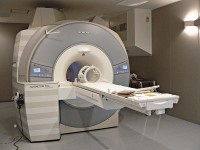A connection was found between reading skills and the tissue properties of white matter in the brain - so states a new study by Dr. Michal Ben Shachar from Bar Ilan University and her colleagues from Stanford University

The research by Dr. Michal Ben-Shahar from the Department of English and the Gonda Center for Brain Research at Bar Ilan University together with her colleagues Prof. Brian Wendel, Jason Yeatman and Robert Dougherty from Stanford University, which was recently published in the journal Proceedings of the National Academy of Science focuses on the "white matter" In the brain - a network of links coated with a material called myelin that allows the passage of information between distant areas of the brain. The team of researchers used non-invasive techniques based on MRI and DTI (Diffusion Tensor Imaging) imaging of the neural pathways in the brain, with the aim of measuring the properties of the connections of the white matter and how they change over time.
The team of researchers led by Prof. Brian Wendel followed the development of reading skills and connections of the white matter of 55 children aged 12-7 for three years and found a connection between the changes in the brain and the changes in reading skills.
"The good thing about the DTI method is that it is child-friendly," explains Dr. Ben-Shahar. "In a 12-minute scan, high-quality data can be collected from the entire brain while the child is lying down and watching a movie. We even tested 6-year-old children who cooperated," she notes. Ben-Shahar conducted her postdoctoral research at Stanford University and continues to work in collaboration with two of her laboratories.
Ben-Shahar and her research colleagues found that in children with high reading achievements, low levels of white matter were measured in areas of the brain related to reading at the beginning of the experiment, levels that increased rapidly during the three years of the experiment. In contrast, in children whose reading skills were below average, the opposite phenomenon was observed. The white matter levels measured in the areas of the brain related to reading were relatively high at the beginning of the experiment but gradually decreased later. This finding can indicate that these children did not create new neural connections and did not strengthen existing connections.
"This study differs from other studies due to its relative length. Most studies dealing with developmental imaging compare brain data of groups of adults and brain data of groups of children. In the present study we followed the same group of children over time. This is how we discovered that the changes that occur in the connections in the brain provide more information about reading skills than measurements made at a specific point in time," says Ben-Shahar. "This finding is important if we intend to use MRI as a diagnostic tool in education in addition to the standard behavioral tools. The meaning of this is that it will be necessary to perform a measurement more than once in order to observe dynamic developmental changes", she concludes.
Dr. Ben Shahar continues to research links of white matter in the brain in her laboratory at Bar Ilan University.
Her joint project with Ofer Amir and Ruth Azarti from Tel Aviv University, which won a research grant from the National Science Foundation, examines the white matter in the brain connections of people who stutter.
In addition to this, Dr. Ben Shahar researches immigrants from Ethiopia who speak Amharic fluently, and deal with Hebrew as their first written language, hoping to identify how the adult brain changes during the acquisition of reading skills.
